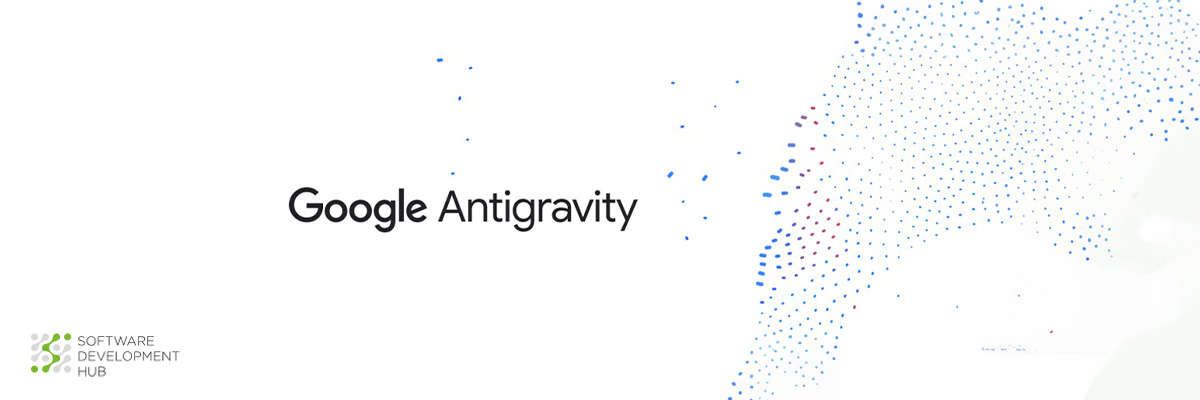7 Critical ERP Software Features That Drive Business Success
Enterprise Resource Planning systems have become essential infrastructure for businesses seeking sustainable growth, with critical ERP features determining the difference between operational excellence and inefficiency. Recent industry data shows 84% of IT leaders are planning to invest in ERP systems, a clear indicator of how these platforms have shifted from optional upgrades to strategic necessities.
The features of enterprise resource planning systems extend far beyond basic database management. Modern ERP platforms integrate and automate essential financial and operational functions while providing data insights that were previously scattered across disconnected systems. Organizations implementing these systems consistently reduce accounting errors by as much as 75%, which explains why 74% of companies now prioritize digital infrastructure improvements.
What distinguishes effective ERP implementations from mediocre ones? The most valuable features of erp system create a unified view of financial, operational, and business data that flows across the organization in real-time. Companies that expand their ERP capabilities to include human resource management, customer relationship management, and ecommerce operations typically see the greatest returns on their technology investments.
The challenge lies not in choosing whether to implement ERP, but in identifying which capabilities will deliver measurable value for your specific business model. This article examines seven essential erp features and functions that consistently drive business success, helping you understand which functionalities merit investment priority.
Integration Across Business Functions
Modern businesses face a common challenge: operational systems that function independently often create information bottlenecks and workflow inefficiencies. ERP integration addresses this fundamental issue by connecting core systems with specialized applications throughout the organization, establishing data pathways that eliminate traditional departmental barriers.
Integration feature overview
ERP integration represents a methodology for streamlining data sharing by connecting your primary system with critical business applications, specialized software, and databases. Rather than forcing departments to operate in isolation, modern ERP solutions utilize APIs and connectors to create information highways between previously disconnected systems.
The scope of integration capabilities spans multiple business functions. Organizations typically connect their ERP with:
- Customer Relationship Management (CRM): Providing sales and marketing teams with real-time market intelligence and demand metrics
- Human Capital Management (HCM): Augmenting HR applications with broader organizational functionality
- E-commerce platforms: Linking online sales channels directly with inventory and financial data
- Supply Chain Management (SCM): Optimizing inventory levels and enhancing demand forecasting accuracy
- Financial and accounting systems: Centralizing financial information for comprehensive reporting
These interconnections transform the ERP from a standalone application into a centralized hub that orchestrates data movement across the entire business ecosystem.
Key benefits of integration in ERP systems
Poor integration across applications ranks among the top three challenges for nearly half of senior procurement executives, illustrating why this functionality has become critical for operational success.
Integration creates a single source of truth by consolidating data from finance, sales, procurement, and inventory into unified repositories. This consolidation enables real-time access to accurate information while dramatically reducing errors and inconsistencies. After implementing integrated ERP systems, 95% of businesses report improved operations.
The elimination of operational silos represents another significant advantage. Connected functional areas can align their processes, removing manual handovers and duplicate data entry requirements. Information and tasks flow smoothly across departments, creating more efficient workflows throughout the organization.
Real-time data analytics and reporting capabilities give businesses competitive advantages through informed decision-making. Integrated systems provide enhanced visibility into supply chain operations, enabling proactive decision-making and reducing lead times.
From a compliance perspective, integrated ERP systems help ensure regulatory adherence across operations, potentially preventing costly legal settlements. Recent years have witnessed record-setting legal settlements around HR compliance issues, making this protection particularly valuable.
Automation of Repetitive Tasks
Manual data entry, repetitive report generation, and routine administrative tasks consume significant resources across business operations. ERP automation addresses these inefficiencies by implementing software tools and technologies that handle repetitive tasks within enterprise frameworks, reducing manual effort while improving accuracy across various business functions.
Automation feature overview
The foundation of ERP automation lies in intelligent technologies including artificial intelligence (AI), machine learning (ML), and robotic process automation (RPA) that improve process efficiency and maintain error-free data. These technologies work through unified databases that serve as the foundation for automation across departments, enabling seamless information flow throughout organizations.
Modern ERP system features target several critical automation areas:
Data Entry: Systems automatically capture and integrate information from diverse sources such as spreadsheets, databases, emails, and paper documents, eliminating manual input and associated errors
Report Generation: Pre-defined templates automatically produce and distribute reports at scheduled intervals, ensuring stakeholders receive up-to-date information without manual intervention
Purchase Order Processing: The entire purchase order lifecycle—from receipt and validation to data entry—operates through automated processes that ensure accuracy and timely processing
Employee Onboarding: Information collection, account setup, and permission assignment become streamlined through automation, creating consistent experiences
These erp features and functions operate through integrated systems that eliminate the traditional bottlenecks associated with manual processing.
Key benefits of ERP automation
ERP automation delivers measurable operational improvements across multiple business areas. Organizations implementing these systems experience increased efficiency as automated processes streamline traditional workflows, reducing human error while improving overall productivity. Companies can reduce the time spent on manual data entry by as much as 84%, freeing employees to focus on strategic initiatives.
Cost optimization represents another significant advantage. Automated routine tasks enable companies to optimize resource allocation and reduce financial losses stemming from inaccuracies, compliance violations, or delayed project delivery. Rather than expanding staff to handle increasing workloads, businesses maintain efficiency with leaner teams.
The human resource impact proves equally valuable. Employees shift from repetitive data entry and processing tasks to projects requiring creativity, problem-solving and strategic decision-making. This transition from routine activities to higher-value work dramatically improves overall workforce effectiveness.
Financial operations benefit particularly from ERP automation through transparent and accessible accounting processes. Tasks that previously required days to complete manually—such as matching purchase orders with accounts payable balances—now finish in minutes with greater accuracy.
Real-world application of automation in ERP
Practical implementations demonstrate how ERP automation creates tangible operational improvements. Automated ERP systems continuously monitor inventory stock levels and generate purchase orders when quantities drop below predetermined thresholds. This proactive approach ensures optimal inventory levels without constant manual oversight, preventing both overproduction and stockouts.
Financial departments eliminate paper-based processes through automated invoicing and sales order systems. Solutions like DocStar integrated with Epicor ERP capture data automatically from faxes, emails and paper formats, while providing audit trails for full visibility. These automated processes substantially reduce manual labor and costly mistakes while maintaining compliance.
Manufacturing operations utilize advanced machine monitoring capabilities through ERP systems that incorporate manufacturing execution systems (MES) and Internet of Things (IoT) technologies to provide real-time views of shop floor conditions, schedule preventative maintenance, and optimize factory processes. This automated monitoring enables proactive approaches to maintenance and production control rather than reactive management.
End-to-end process automation creates unified workflows spanning entire business operations. When customers place orders online, automated systems forward requests to warehouses, update tracking information, process payments, and ensure accurate financial recording—all without repeated manual data entry at each step.
These implementations consistently deliver reduced errors, increased productivity, and the capability to make faster, more informed decisions based on reliable, real-time information.
Advanced Reporting and Analytics
Data-driven decision making has become the foundation of competitive business operations, with ERP reporting and analytics capabilities serving as the analytical engine that converts operational noise into strategic clarity. These advanced erp features distinguish sophisticated organizations from those still operating on intuition and spreadsheet-based insights.
Reporting and analytics feature overview
Contemporary ERP platforms integrate comprehensive analytical frameworks that collect, process, and visualize information across business operations. The functionality encompasses report generation engines, query tools, interactive dashboards, and data visualization components designed to make complex organizational data accessible to decision-makers.
The analytical capabilities within enterprise resource planning features operate across multiple sophistication levels:
- Descriptive analytics: Historical data summarization to identify performance patterns and operational trends
- Statistical analysis: Advanced mathematical techniques like regression analysis that reveal correlations within large datasets
- Predictive analytics: Machine learning algorithms that forecast future outcomes based on historical patterns
- Prescriptive analytics: Recommendation engines that suggest specific actions based on data-driven insights
Modern ERP analytics incorporates sophisticated data visualization technologies that convert numerical complexity into intuitive visual formats including interactive dashboards, trend graphs, and analytical charts. This visual approach ensures that performance insights remain accessible across organizational hierarchies, regardless of individual technical expertise levels.
Key benefits of ERP reporting tools
The strategic advantages of reporting and analytics features of erp system extend throughout organizational decision-making processes. These tools establish the foundation for informed strategic choices by providing immediate access to accurate, contextualized information that enables proactive opportunity identification and challenge resolution.
ERP reporting systems significantly improve operational efficiency through systematic identification of process bottlenecks and inefficiencies. The comprehensive analytical approach allows organizations to pinpoint improvement opportunities with precision, resulting in measurable productivity gains and waste reduction.
Financial planning receives substantial enhancement through advanced reporting capabilities. These systems provide detailed visibility into financial performance metrics, cost structures, revenue patterns, and profitability analytics that support sophisticated financial forecasting. The analytical insights extend beyond internal operations to include customer behavior analysis, enabling organizations to develop targeted products and services that align with market demands.
From a compliance perspective, ERP analytics provides automated monitoring and alert systems that ensure regulatory adherence while identifying potential issues before they escalate into costly legal complications.
Real-world application of ERP analytics
ERP analytics delivers measurable business improvements across various operational areas. Finance departments utilize these erp system features to maintain real-time visibility into cash flow patterns, expenditure tracking, and revenue forecasting through sophisticated financial dashboards. This analytical capability empowers financial leadership to make rapid strategic decisions regarding investments, cost optimization, and budget adjustments when operational metrics indicate necessary corrections.
Supply chain managers depend on ERP analytics for real-time monitoring of inventory levels, vendor performance metrics, and order fulfillment statistics. This analytical foundation supports strategic decisions about supplier relationships, reorder optimization, and distribution route planning that prevent both stockout situations and excess inventory accumulation.
Sales organizations gain significant advantages through these erp features and functions by accessing comprehensive visibility into customer order patterns, product performance analytics, and revenue stream analysis. The reporting capabilities help identify high-performing products, seasonal demand fluctuations, and customer purchasing behaviors that inform strategic sales approach adjustments.
Organizations that successfully implement ERP analytics report substantial returns on their technology investments. Industry analysis indicates that ERP analytics helps businesses achieve desired ROI by identifying root causes of performance issues, eliminating operational inefficiencies, and optimizing cost structures.
The true value of ERP reporting and analytics lies in its capacity to synthesize disparate operational data into coherent strategic intelligence that informs decision-making across all organizational levels.
Real-Time Data Visibility
Real-time visibility represents a fundamental shift in how businesses access and utilize operational information, ranking among the most critical erp features for modern enterprises. Traditional batch processing systems created information delays that often rendered data obsolete by the time it reached decision-makers, but contemporary ERP solutions eliminate these bottlenecks entirely.
Real-time visibility feature overview
Understanding real-time data visibility requires recognizing its core function: the instantaneous processing and availability of information across business operations as events occur. Rather than waiting for scheduled updates or manual data compilation, this functionality provides immediate operational visibility through continuous data streams.
The technical architecture behind real-time ERP platforms relies on several interconnected technologies:
- In-memory computing that processes information faster than traditional disk-based storage
- Data streaming capabilities that maintain continuous information flow
- IoT devices and sensors that feed operational data directly into central systems
- Customizable dashboards that present relevant metrics tailored to each user's responsibilities
We should understand that this creates a unified information ecosystem where all stakeholders access identical, current data regardless of their departmental location. Consider a practical example: when 10 units ship from inventory, the system simultaneously updates stock levels, generates customer invoices, and triggers follow-up notifications across all relevant departments.
Key benefits of real-time ERP data
The strategic advantages of real-time data access extend well beyond operational convenience. Most significantly, immediate information access enables leaders to identify changing business conditions and adjust strategies without the delays inherent in traditional reporting cycles. This contrasts sharply with legacy systems that required manual data extraction processes, creating information integrity concerns and potentially outdated decision foundations.
Real-time visibility delivers several measurable operational improvements:
- Process optimization – Manual data entry and reconciliation procedures become unnecessary, streamlining operations and eliminating workflow bottlenecks
- Cross-departmental coordination – Sales teams can provide accurate delivery commitments while operations adjusts production schedules based on current demand patterns
- Error prevention – Systems identify and correct discrepancies immediately, preventing costly mistakes such as overselling unavailable inventory
- Customer service excellence – Service representatives access current order statuses, inventory levels, and delivery schedules instantly
The shift from reactive to proactive management represents perhaps the most valuable outcome, as businesses can address potential issues before they escalate into operational problems.
Real-world application of real-time dashboards
Finance departments exemplify the practical value of real-time ERP dashboards, enabling CFOs and financial teams to make immediate decisions regarding investments, cost management, or budget adjustments when expenditures exceed projections. This immediate visibility into cash flow patterns, inventory valuations, and sales forecasts allows financial leaders to identify trends and implement corrective measures proactively.
Supply chain managers similarly benefit from continuous visibility into inventory levels, vendor performance metrics, shipment statuses, and order fulfillment rates. Access to this real-time information enables strategic decisions about supplier relationships, reorder timing, and logistics optimization that prevent stockouts while minimizing excess inventory carrying costs.
Manufacturing environments demonstrate particularly compelling applications of real-time ERP data. Perpetual inventory tracking combined with demand forecasting maintains high customer satisfaction levels while reducing excess stock accumulation. Automated processes handle invoice generation, payment reconciliation, and scheduled financial reporting without manual intervention.
Financial Management and Accounting
Financial management functionality serves as the operational foundation for successful ERP implementations, with accounting modules determining whether organizations can maintain accurate financial control while scaling their operations. The financial components within modern ERP systems convert traditional accounting practices into integrated, automated workflows that provide both visibility and control over corporate finances.
Financial management feature overview
ERP financial management creates a unified platform for centrally managing accounting and finance operations through integrated modules. These systems typically include several core components:
- General Ledger (GL): Serves as the central repository for all financial transactions, providing a comprehensive record of financial activities
- Accounts Payable (AP): Automates invoice processing, payment approvals, and vendor management workflows
- Accounts Receivable (AR): Manages customer invoicing, payment tracking, and outstanding balances
- Fixed Asset Management: Tracks company-owned assets, calculates depreciation, and maintains detailed records
- Cash Management: Monitors cash flow, bank reconciliations, and liquidity positions
Advanced features of erp system extend beyond these fundamentals to include multi-currency management, tax compliance tools, and budgeting capabilities that accommodate complex organizational structures. These modules integrate seamlessly with other business functions, ensuring information flows efficiently from operations to financial statements.
Key benefits of ERP financial tools
ERP financial tools deliver measurable advantages for organizations prioritizing efficiency and accuracy. Automation of routine processes enables financial departments to reduce manual data entry time by as much as 84%. This automation encompasses transaction matching, account reconciliation, and financial close procedures, which accelerates reporting cycles and allows finance leaders to focus on strategic planning.
ERP financial functionality provides enhanced visibility through prebuilt analytics that measure critical KPIs in real time, including current ratio, quick ratio, debt-to-equity ratio, and inventory turnover. Organizations gain immediate insights into financial health, enabling proactive decision-making rather than reactive responses to financial challenges.
These enterprise resource planning features also strengthen compliance and security frameworks. Modern ERP systems include built-in controls and audit trails that help manage segregation of duties and payment rules, protecting companies from internal and external fraud. Automated compliance checks ensure adherence to accounting standards like GAAP or IFRS without requiring extensive manual oversight.
Customer Relationship Management (CRM)
Customer management capabilities within ERP systems represent a critical intersection where sales performance meets operational efficiency. Organizations that integrate CRM functionality into their enterprise resource planning platforms consistently outperform those relying on standalone customer management solutions.
CRM feature overview in ERP systems
Integrated CRM capabilities within ERP platforms manage the complete customer interaction lifecycle through centralized data management. The unified approach consolidates customer communications and purchase history alongside sales opportunities, marketing campaign effectiveness, support ticket management, and lead generation processes.
The distinction between integrated ERP-CRM systems and standalone solutions lies in data connectivity. ERP-integrated systems align customer information with financial and operational data, creating comprehensive visibility into both business performance and customer behavior patterns. Sales representatives access complete customer histories, service teams track order statuses in real-time, and management gains insights from consolidated business intelligence.
Key benefits of ERP-integrated CRM
ERP-CRM integration delivers measurable advantages through unified data management. Organizations gain a single customer view by consolidating information from finance, operations, and sales departments into one database. This consolidation enables accurate forecasting, targeted marketing strategies, and improved service delivery protocols.
Workflow automation within integrated systems eliminates manual processes for marketing communications, support ticket tracking, and report generation. The efficiency gains allow teams to focus on relationship-building rather than administrative tasks. Financial returns from integrated ERP-CRM implementations average $8.71 for every dollar invested.
Process streamlining occurs when sales orders created in CRM automatically transfer to ERP systems for invoicing and fulfillment. This eliminates duplicate data entry while improving accuracy across departments. Implementation data shows integrated systems achieve 28% higher customer retention rates compared to disconnected platforms.
Supply Chain and Inventory Management
How do successful businesses maintain optimal inventory levels while avoiding the dual threats of stockouts and excess carrying costs? Supply chain optimization stands as a fundamental component among ERP features, enabling organizations to coordinate complex processes that transform raw materials into finished products delivered to customers.
Supply chain feature overview
Modern ERP systems provide comprehensive supply chain management capabilities that coordinate every aspect from demand planning through final distribution. This functionality encompasses procurement management, material requirements planning (MRP), inventory tracking, warehouse management, and distribution planning. The integrated approach allows businesses to detect trends, make informed decisions, and execute strategic priorities using current information.
These enterprise resource planning features enable organizations to synchronize demand forecasting with material availability, maintain centralized vendor databases, and execute production schedules with precision. Advanced implementations incorporate IoT sensors and AI monitoring to enhance data collection and automate decision-making throughout the supply chain network.
Key benefits of ERP in inventory control
ERP inventory management delivers measurable advantages through real-time visibility and process automation. Organizations implementing these systems typically experience:
- Automated reordering based on predetermined thresholds, reducing both stockouts and excess inventory
- Optimized carrying costs through demand-matched inventory levels
- Enhanced traceability via barcode scanning and serial number tracking
- Improved demand forecasting using both historical patterns and real-time data
The data-driven approach inherent in ERP system features for inventory control creates operational efficiency that extends beyond simple stock management. Companies utilizing these capabilities report better order fulfillment rates, more efficient warehouse space utilization, and substantial reductions in obsolete inventory.
Comparison Table
How do these seven critical ERP capabilities compare in terms of functionality and business impact? The following analysis consolidates the key components, benefits, and measurable outcomes for each feature, providing a reference framework for evaluating which capabilities align with your organizational priorities.
|
ERP Feature |
Core Components/Functionality |
Key Benefits |
Implementation Results |
Integration Capabilities |
|
Integration Across Business Functions |
- CRM integration |
- Single source of truth |
- 95% improved operations |
Connects with specialized applications across entire organization through APIs and connectors |
|
Automation of Repetitive Tasks |
- Data entry automation |
- Increased operational efficiency |
- 84% reduction in manual data entry time |
Integrates with AI, ML, and RPA technologies |
|
Advanced Reporting and Analytics |
- Descriptive analytics |
- Data-driven decision making |
- Optimized operational costs |
Connects with multiple data sources for comprehensive analysis |
|
Real-Time Data Visibility |
- In-memory computing |
- Enhanced decision-making |
- Faster financial decisions |
Real-time connection with all business operations and departments |
|
Financial Management and Accounting |
- General Ledger |
- Reduced manual entry |
- 84% reduction in processing time |
Integrates with other business functions for seamless information flow |
|
Customer Relationship Management |
- Customer communications tracking |
- Unified customer view |
- $8.71 ROI per dollar spent |
Connects with financial and operational systems for comprehensive customer insights |
|
Supply Chain and Inventory Management |
- Procurement management |
- Reduced stockouts |
- Better order fulfillment |
Integrates with IoT components and AI monitoring systems |
Conclusion
Selecting an ERP system equipped with these seven essential capabilities positions businesses for sustained operational excellence. Companies that implement comprehensive ERP solutions consistently experience measurable efficiency improvements across departments while gaining access to data insights that were previously locked in disconnected systems.
The evidence presented throughout this analysis demonstrates how integration capabilities establish a unified operational foundation, while automation eliminates time-consuming manual processes and reduces costly errors. Analytics combined with real-time visibility enable leaders to identify emerging opportunities and address potential issues before they escalate. Financial management provides the structural foundation for strategic planning, with integrated CRM strengthening customer relationships and supply chain features maintaining optimal inventory control.
The performance metrics we've examined speak clearly—organizations report processing time reductions of 84% and customer retention improvements of 28%. Each feature delivers specific advantages while contributing to a cohesive operational framework that amplifies overall business performance.
Your evaluation process should align these seven critical capabilities with your organization's specific operational requirements. Industry context and business model will determine which functionalities provide the greatest return on investment. While implementation demands thoughtful planning and change management, the documented benefits justify the investment for companies committed to operational excellence.
Success in ERP implementation extends beyond software selection. User adoption, comprehensive training, and organizational buy-in determine whether these systems deliver their full potential. We recommend approaching ERP selection as a strategic business initiative that aligns technology capabilities with long-term operational goals rather than treating it as a simple software acquisition.
Categories
Share
Need a project estimate?
Drop us a line, and we provide you with a qualified consultation.








